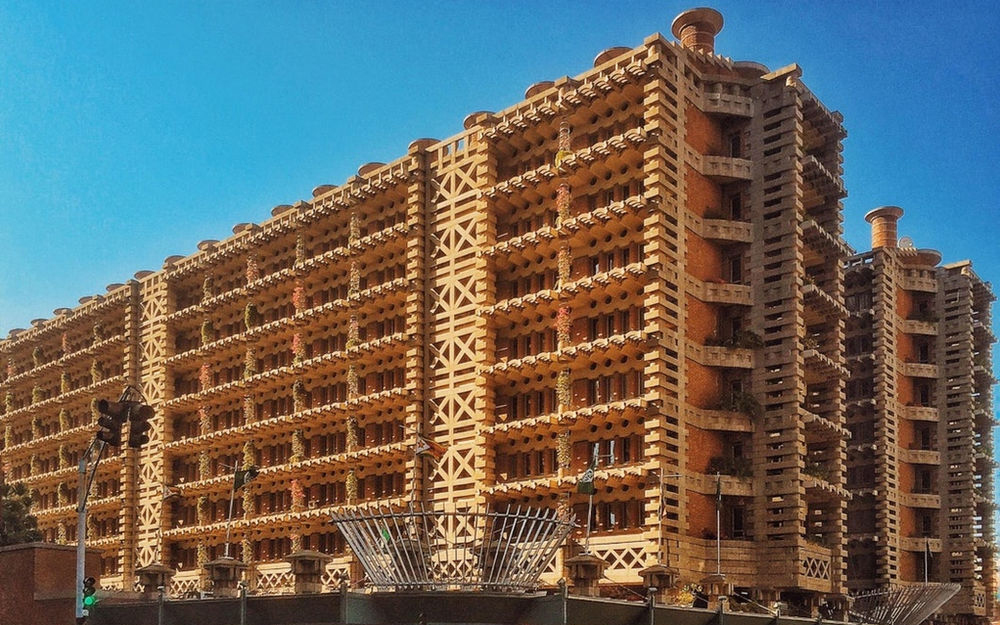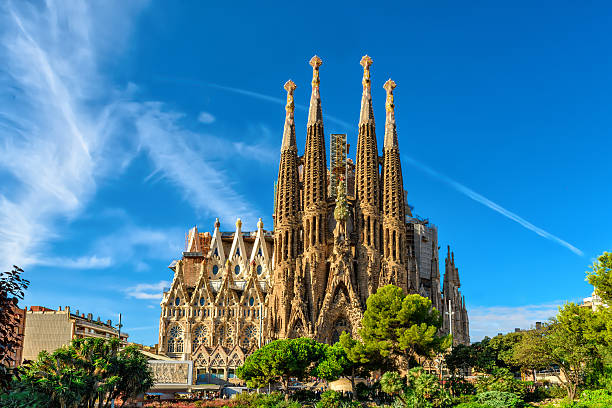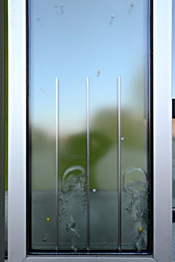
Biomorphic architecture – the practice of incorporating designs from the natural world into a building’s design – is hardly a new idea. One needs to look no further than the Sagrada Família (construction began 1882), a Roman Catholic Minor basilica in Barcelona, to see that nature has always influenced architectural design; the skeletal lines of the Passion façade, the tree-like branches of the nave, leave no room for argument. What is new, however, is a growing interest in architectural biomimicry, the attempt not only to emulate nature in design, but to create more sustainable buildings by adopting natural structures. Sigrid Adriaenssens, an engineering professor at Princeton, describes nature as “lazy and intelligent”, “[using] very little material and [placing] it in the right place”. This efficiency is one humans would benefit from, as the availability of materials shrinks, and the need to create structures that are more environmentally viable grows. As Dr Rupert Soar, lecturer at Nottingham Trent University, puts it, “nature is always fighting to use limited [resources] most effectively…and we are entering that era ourselves”.

To see the potential benefits of biomimicry, the Eastgate Building (1996) in Harare, Zimbabwe, is a prime example. The building is designed after a termite mound. During the day, a termite mound warms up beneath the sun, and by night the air inside is warmer than the air outside. The warm air rises through a hole at the top of the mound and cool air is drawn through underground tunnels, maintaining a constant temperature, and bringing fresh air into the mound.

The building operates in the exact same way, using chimneys and a series of underground vents to keep the building cool. The importance of this innovation cannot be understated, especially since reports suggest that ‘10 new air-conditioning units will be sold every second for the next 30 years, showing the need for ways to keep cool without using vast quantities of electricity. In this way, the Eastgate Building has been a resounding success, using around 90% less energy than a similarly sized building next door.
This type of architecture is constantly innovating, and, more recently, it has taken one step further. The BIQ (Bio Intelligent Quotient) building, constructed in 2013, is wrapped in an algae biomass, becoming one of the first ‘biohybrid buildings’. The algae is kept within a set of transparent panels surrounding the building, and a water circuit supplies it with nutrients and carbon dioxide to allow it to grow. It acts as a sun filter, since, when there is less light in winter, the algae does not propagate and the screens will seem very transparent, allowing more light through. The algae is also harvested and ‘transplanted every three to four weeks in tanks where [it] will undergo fermentation to produce methane gas or biofuel, which is then used to generate carbon-neutral power. The BIQ won the International Building Exhibition and has prompted more interest in algae as a renewable energy source.

This field of architecture is growing as the need to create sustainable and efficient buildings becomes more apparent. Like nature, we need to create structures that use as little as possible, and, lucky for us, we already have the template.